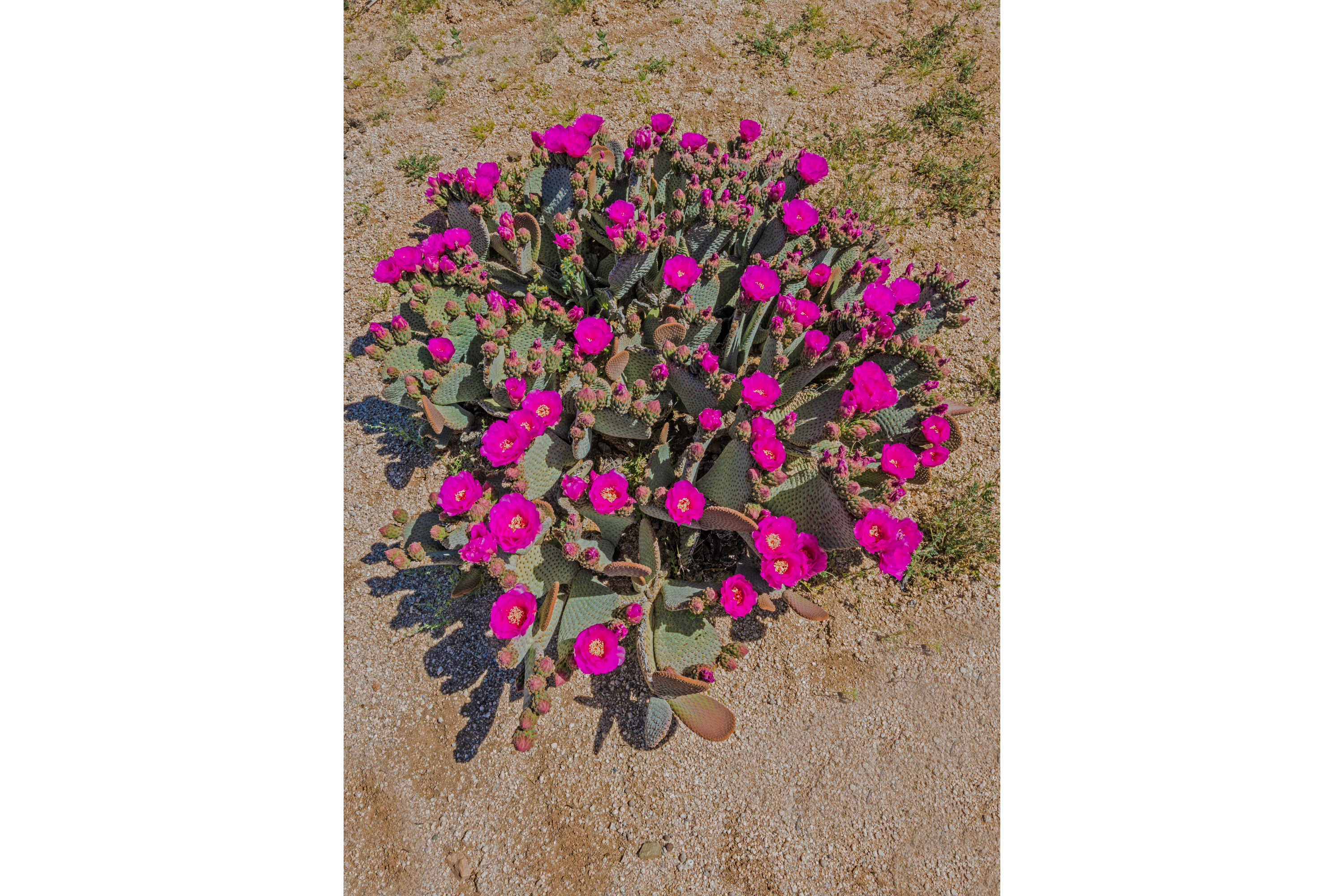Beavertail pricklypear
(Opuntia basilaris)

Description
Opuntia basilaris, the beavertail cactus or beavertail pricklypear, is a cactus species found in the southwest United States. It occurs mostly in the Mojave, Anza-Borrego, and Colorado Deserts, as well as in the Colorado Plateau and northwest Mexico. It is also found throughout the Grand Canyon and Colorado River region as well as into southern Utah and Nevada, and in the western Arizona regions along the Lower Colorado River Valley. Opuntia basilaris is a medium-sized to small prickly pear cactus 70–400 mm (2.8–15.7 in) tall, with pink to rose colored flowers. A single plant may consist of hundreds of fleshy, flattened pads. These are more or less blue-gray, depending on variety, 50–210 mm (2.0–8.3 in) long and less than 100 mm (3.9 in) wide and 10–15 mm (0.4–0.6 in) thick. They are typically spineless, but as is typical for Opuntia species, have many small barbed bristles, called glochids, that easily penetrate the skin. Opuntia basilaris blooms from spring to early summer. Opuntia basilaris contains 0.01% mescaline and 4-hydroxy-3-5-dimethoxyphenethylamine. Opuntia, commonly called prickly pear or pear cactus, is a genus of flowering plants in the cactus family Cactaceae. Prickly pears are also known as tuna (fruit), sabra, nopal (paddle, plural nopales) from the Nahuatl word nōpalli for the pads, or nostle, from the Nahuatl word nōchtli for the fruit; or paddle cactus. The genus is named for the Ancient Greek city of Opus, where, according to Theophrastus, an edible plant grew and could be propagated by rooting its leaves. The most common culinary species is the Indian fig opuntia (O. ficus-indica). O. ficus-indica is a large, trunk-forming, segmented cactus that may grow to 5–7 m (16–23 ft) with a crown of over 3 m (10 ft) in diameter and a trunk diameter of 1 m (1 yd). Cladodes (large pads) are green to blue-green, bearing few spines up to 2.5 cm (1 in) or may be spineless. Prickly pears typically grow with flat, rounded cladodes (also called platyclades) containing large, smooth, fixed spines and small, hairlike prickles called glochids that readily adhere to skin or hair, then detach from the plant. The flowers are typically large, axillary, solitary, bisexual, and epiperigynous, with a perianth consisting of distinct, spirally arranged tepals and a hypanthium. The stamens are numerous and in spiral or whorled clusters, and the gynoecium has numerous inferior ovaries per carpel.
Taxonomic tree:







